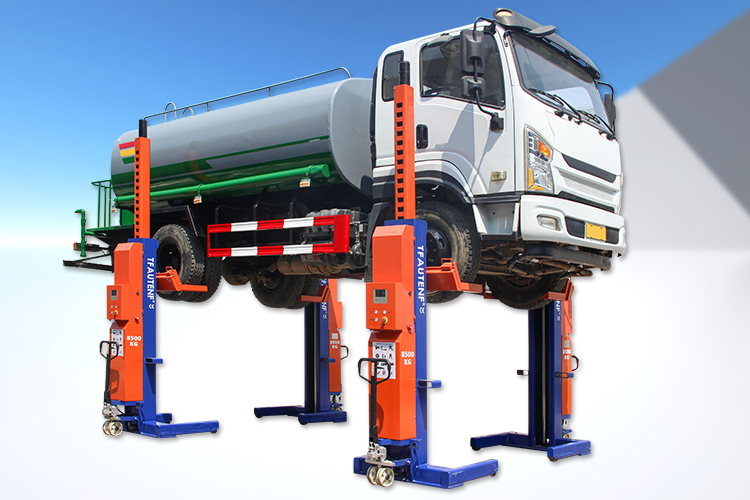
In the modern logistics and transportation industry, heavy-duty truck lifts have become indispensable core equipment in repair shops. They can not only smoothly lift heavy trucks weighing tens of tons to an ideal height but have also fundamentally transformed maintenance operations through ergonomic design. This shift allows maintenance personnel to work upright instead of in the traditional prone or crawling postures, significantly improving work efficiency and safety.
Selecting a suitable heavy-duty truck lift requires comprehensive consideration of several key factors. First, clarify the load requirements: the rated lifting capacity should be no less than 1.2 times the weight of the heaviest vehicle routinely serviced, with a safety factor of at least 1.5. Second, choose the appropriate configuration based on usage frequency. For high-frequency scenarios with daily use exceeding five times, opt for models with cooling systems in the hydraulic system and motors with an insulation class of F or higher. For low-frequency scenarios, ensure the reliability of core components such as safety locks and steel structures.
When selecting a brand, it is crucial to focus on the manufacturer's R&D capabilities, material and craftsmanship quality, and after-sales service network. Choosing enterprises with independent production capabilities and comprehensive after-sales service systems is particularly important. These manufacturers typically have significant advantages in the craftsmanship of core structural components and cost control, providing users with more reliable product guarantees.
Furthermore, intelligence has become a development trend in the new generation of lifts. Modern lifts are generally equipped with smart standby functions, such as automatically entering standby mode after 90 minutes of inactivity. This effectively reduces energy consumption while maintaining screen status display, ensuring both equipment safety and extended service life. Meanwhile, some high-end models have begun to incorporate IoT technology, enabling real-time monitoring and early warning of equipment operational status.
For maintenance enterprises, investing in a high-quality heavy-duty truck lift is not just about the initial cost but also a critical decision affecting long-term operational efficiency. When purchasing, it is also advisable to consider the equipment's scalability, support for future functional upgrades, and whether the supplier provides professional technical training and continuous after-sales service. Through scientific selection and rational configuration, this "efficiency engine" will undoubtedly provide robust support for the sustainable development of the enterprise.